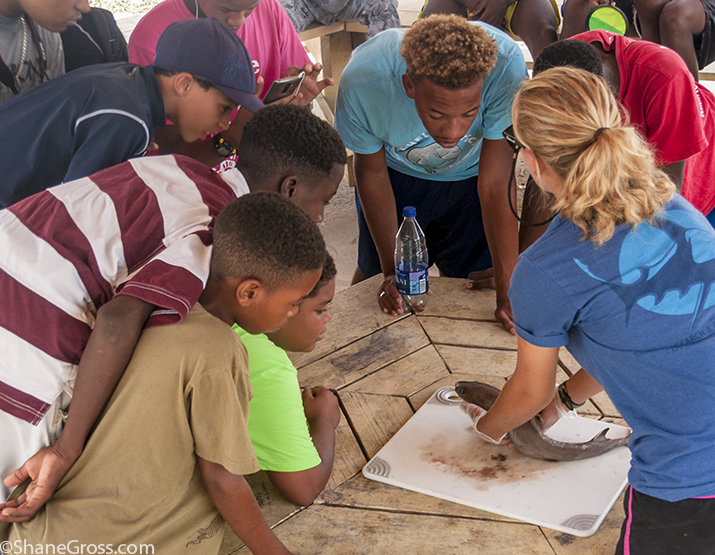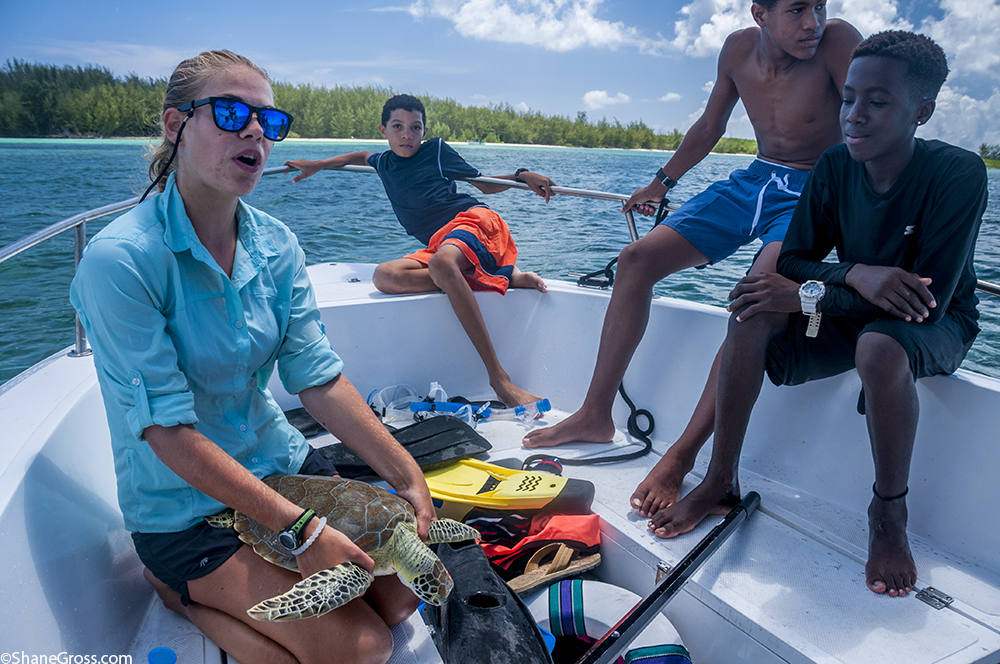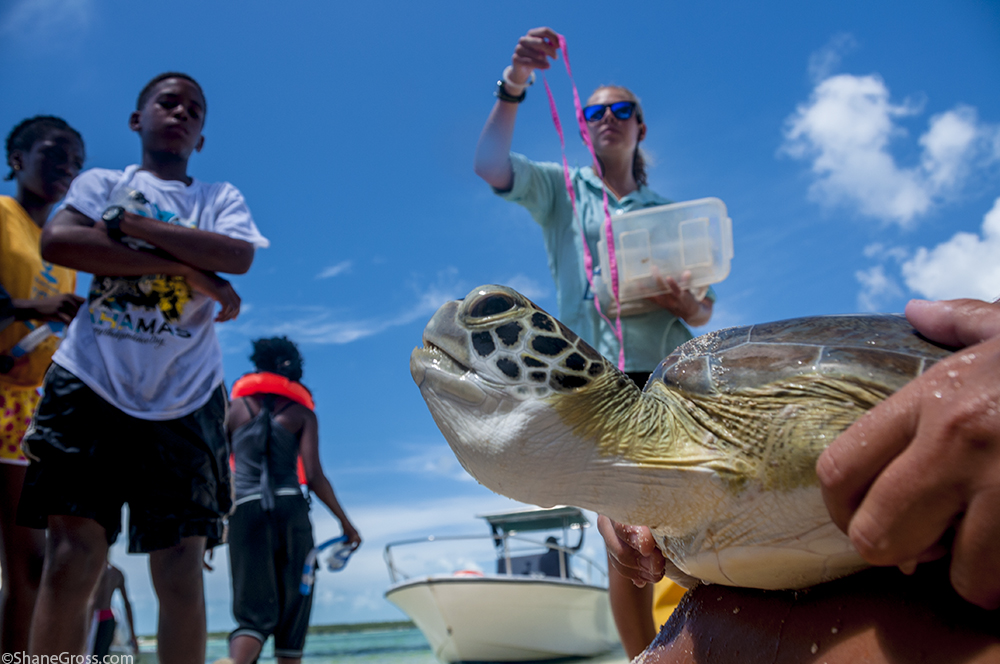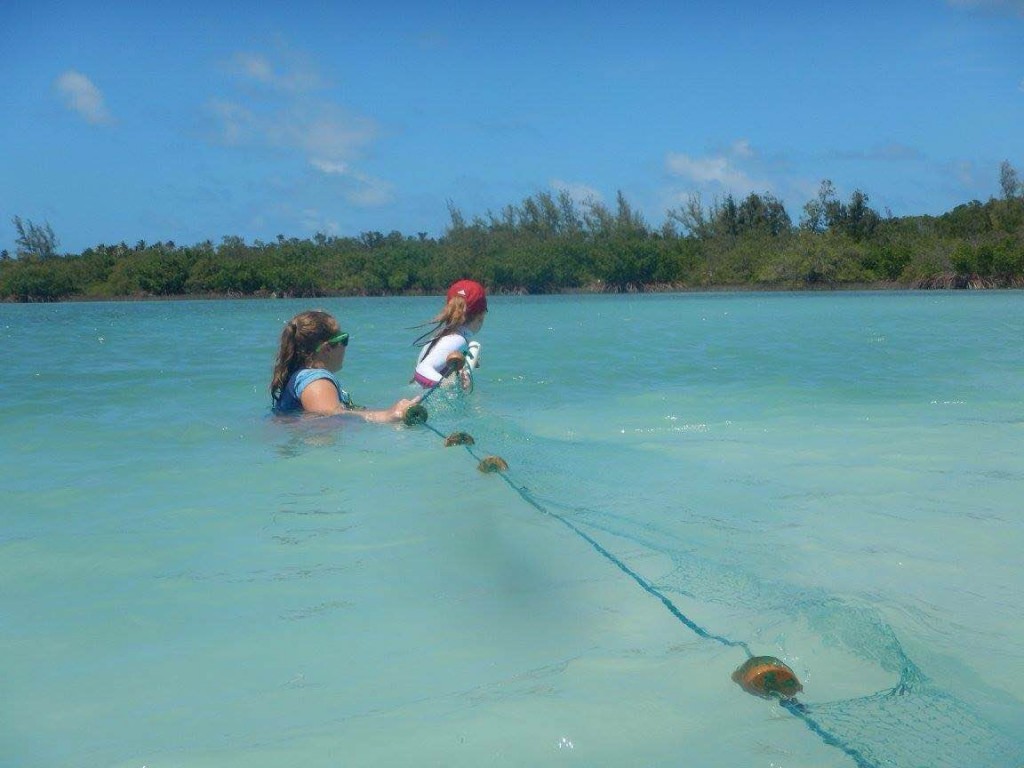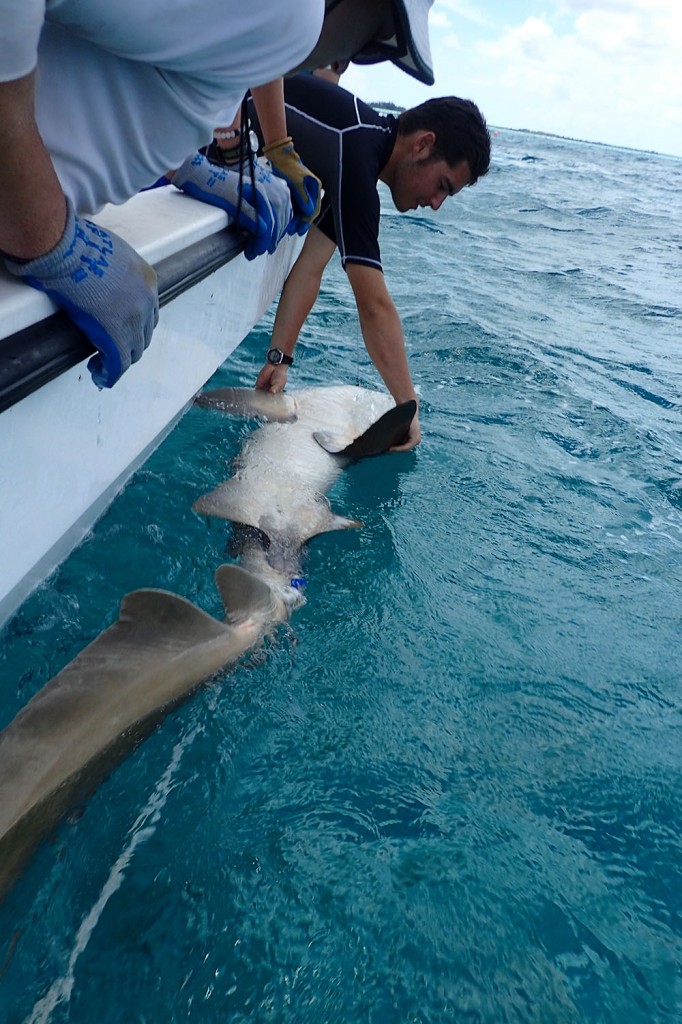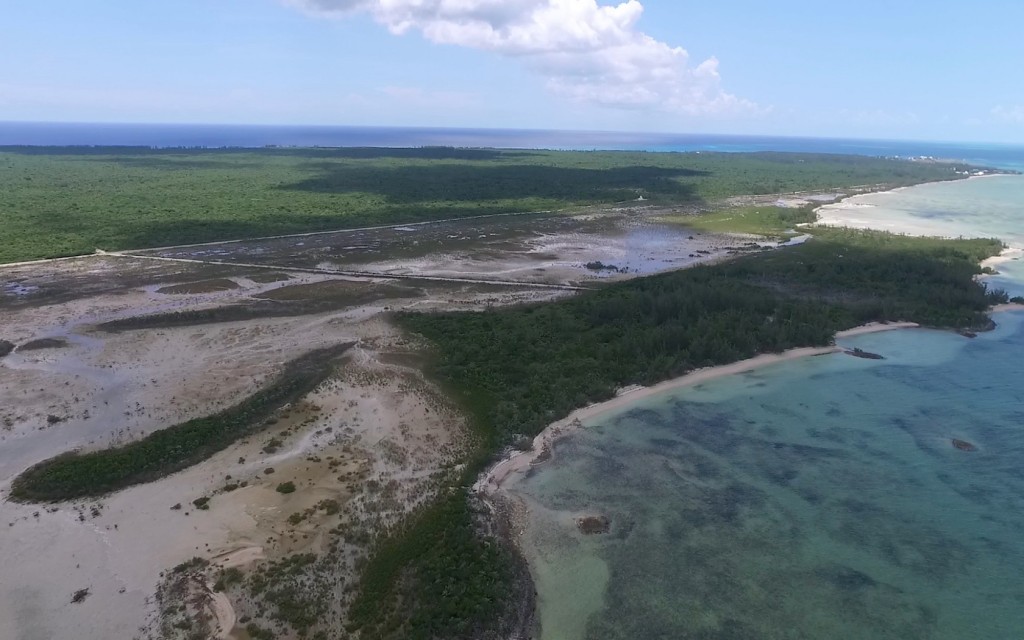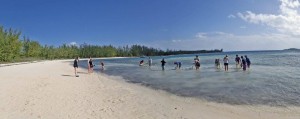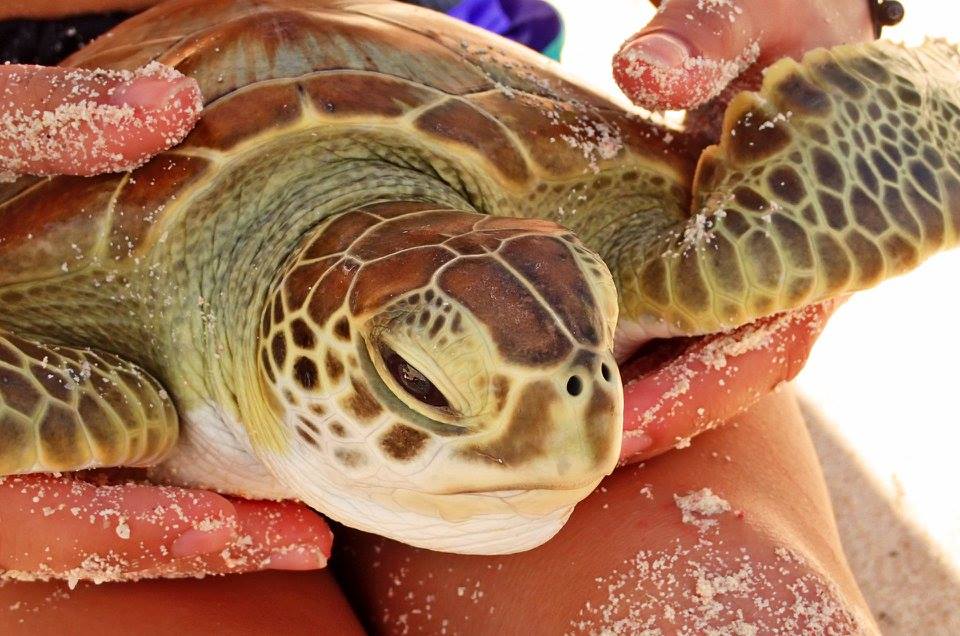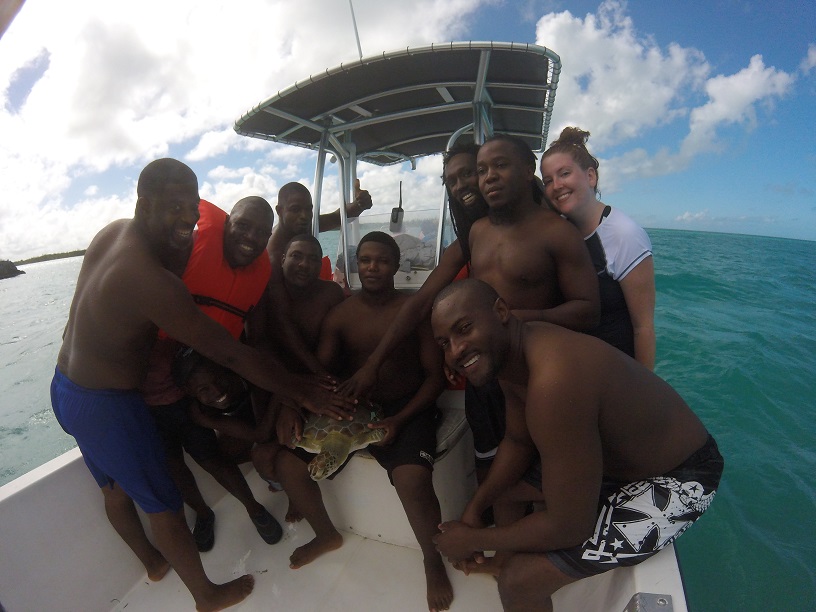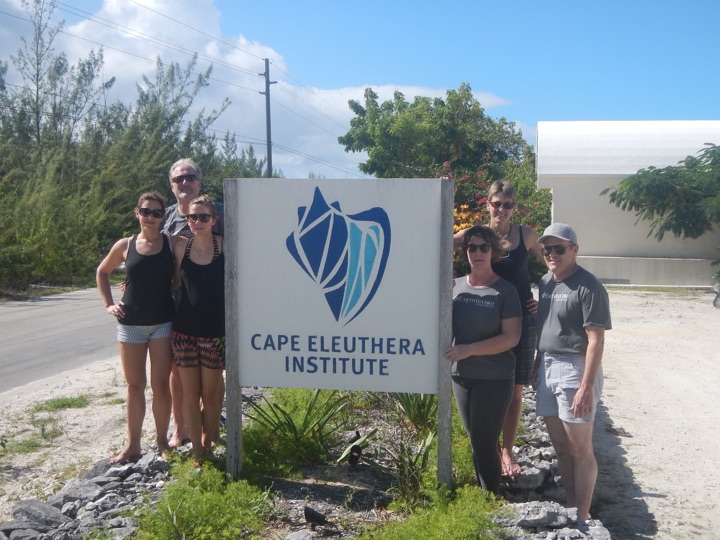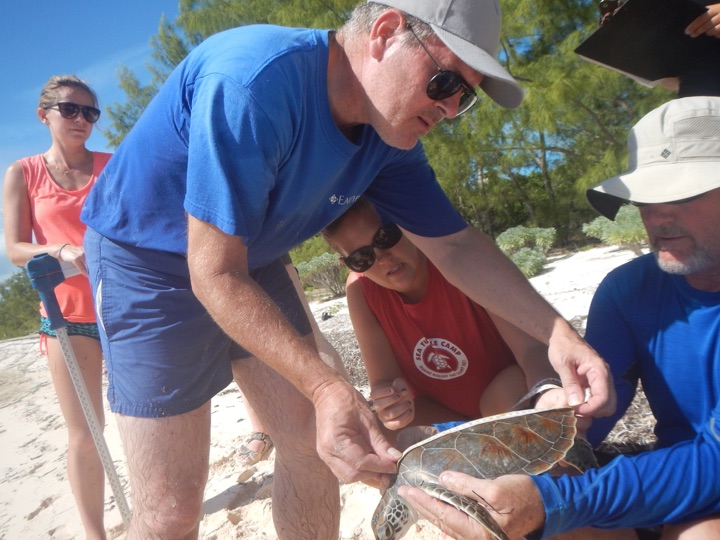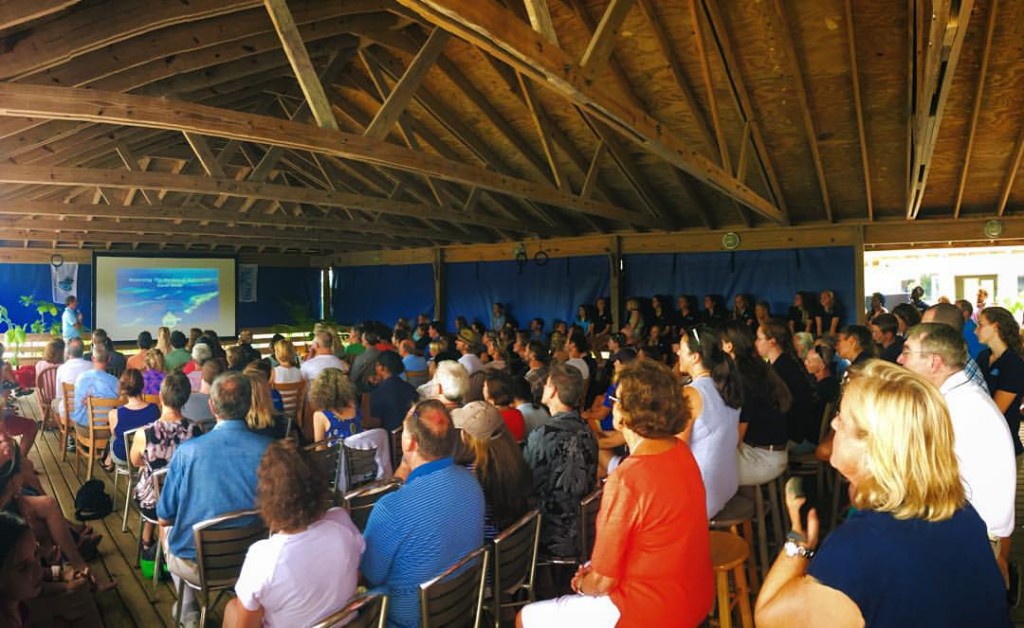Over the past two weeks the CEI Sea Turtle Research and Conservation team has had the opportunity to join forces with the grade 7 and 8 classes of Deep Creek Middle School (DCMS). The grade 8 students have been studying the Lucayans in both their Art and Social Studies classes. In Social Studies the students were learning about the turtle-catching techniques of the Lucayans. The Lucayan method involved tying string to remoras and once the remora has found and attached itself to a turtle the Lucayans would catch it and bring it onto land. In their art class they took inspiration from the turtles to create a Lucayan style art piece. The grade 8 students met up with the turtle team in Deep Creek and learned how to capture, handle and measure juvenile green sea turtles.
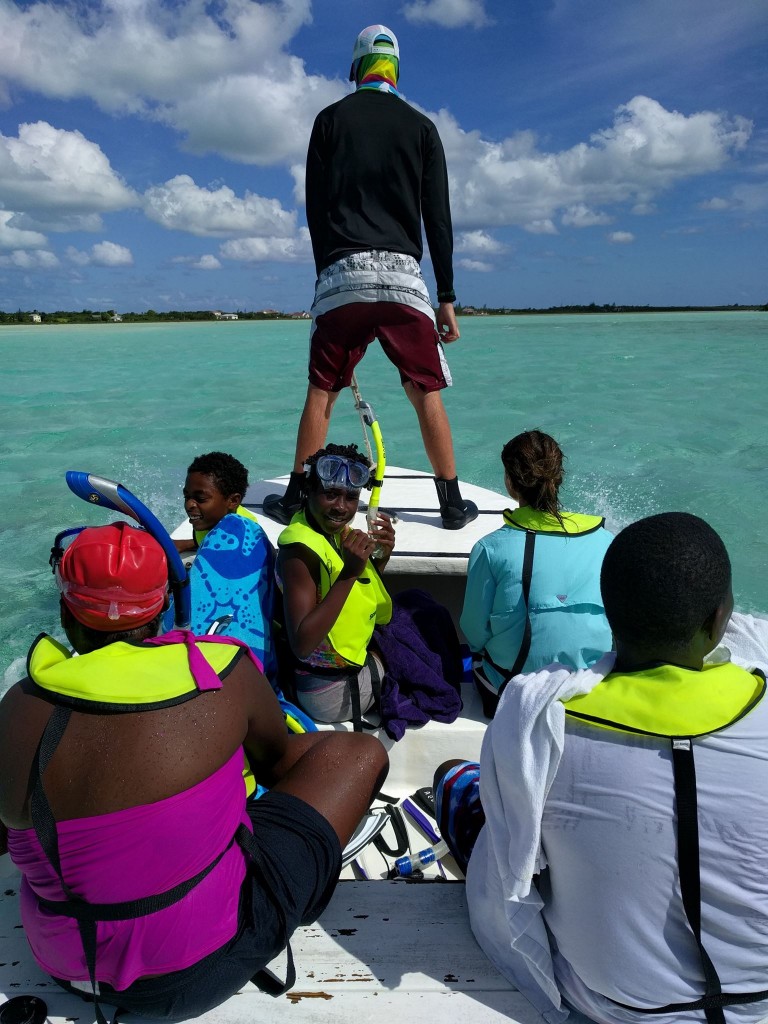
The class broke up into several groups and went out on a small boat to search for turtles within the creek. Once a turtle was spotted one person would keep their eyes on the turtle and point at it while everyone else got their snorkel gear on and ready to go. After the turtle came up to breath a few times swimmers were sent in to chase after the turtle and grab it when it came up to breath.
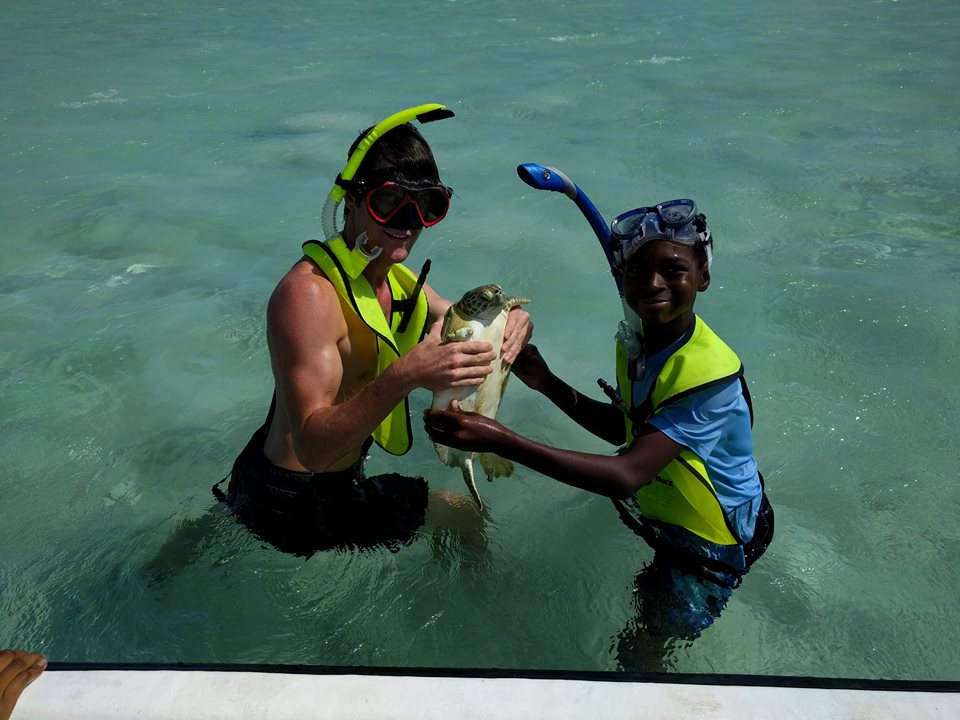
The following week, the grade 7 class was given a presentation about sea turtles and then came out to Starved Creek to take their turn at chasing turtles as part of the School Without Walls program at DCMS. One of the goals of the School Without Walls program is to get students outside and learn about their environment. The students had the opportunity to hold, measure and chase juvenile green sea turtles as well as learn about the importance and significance of seagrass. The students were very excited to name the turtles tossing out names like Marshmallow, Steve and Diamond!
